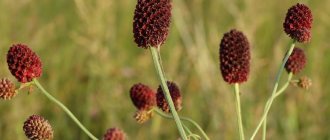Marigolds March 26, 2021 2154
An indispensable decoration for any mixed border or garden path will be bright marigold varieties with photos and names that will make it easier for you to choose the right plant. And the growing secrets described in this article will help you grow healthy seedlings and achieve abundant and long-lasting flowering.
Traditions and history of the plant
The first admirers of these flowers - the Aztecs - sowed all their gardens with them just for beauty. Soon, golden flowers were used in the treatment and prevention of fever , exhaustion and kidney disease. They did not forget about marigolds during ritual ceremonies.
The Indians were sure that students' flowers always grew where gold could be found. And now Latin Americans respect perennial marigolds and decorate their houses with them on All Dead Day and always plant graves with these plants. With the spread of Tagetes throughout the world, their popularity does not decrease at all: in many countries, marigolds symbolize longevity.
Marigold erecta (African)
Tall decorative varieties of Tagetes, the inflorescences are mostly monochromatic, large (up to 15 cm), grown for cutting (cut varieties). The height of the bushes is from 30 to 120 cm. All flowers are double. White marigold varieties for flower gourmets are erect. They look very beautiful in the flower garden, either alone or with other varieties. Using the best varieties of marigolds of different types, colors and heights, you can build a multi-tiered flower bed.
Erect marigold varieties:
- Goldlicht (large bright orange flowers),
- Kilimanjaro (a rare species of tall, white, double marigolds),
- Eskimo (white marigolds with a bush height of approximately 30-40 cm),
- Sonnenschein (lemon-yellow color of inflorescences on a relatively low bush),
- Vanilla (white, large, about 12 cm in diameter, inflorescences).
Botanical description and what they look like
The stems of this flower are straight with branches and can grow from 20 cm to 120 cm, depending on the variety. The root system is taproot. The castings are most often divided, with teeth. They are both light and dark green, located opposite each other, and sometimes alternately (“ladder”).
The inflorescences are in the form of a basket, there are double and simple , you can find plants in all shades of yellow, orange and brown.
Representatives of this variety have medium-sized heads, which are formed by one row of leaves fused to each other. They bloom for quite a long time - from June until the first frost.
On a note. The fruits of marigolds are in the form of black or black-brown seeds. They can be stored for 3-4 years.
Plant species
Tagetes can be classified according to various criteria. By growing time:
- annuals. Grown by seedling method;
- perennial. They grow by self-sowing.
By plant size:
- dwarf. Height does not exceed 12-15 cm;
- short. Reach 15-30 cm;
- average. Size about 50 cm;
- tall: 50-70 cm;
- giant ones grow up to 120 cm.
According to the structure of the head:
- Chrysanthemum-shaped. Externally similar to the flower of the same name, the marginal petals are large and tubular.
- Anemoid - have 1-3 rows of petals, the core consists of large female flowers of a tubular shape.
- Terry (densely terry) - the basket is topped with a large number of tubular petals, which are arranged in dense rows.
- Semi-double - have 2-5 rows of reed petals.
- Carnation flowers - distinguished by petals with wavy edges.
- Simple. Their heads consist of a tubular middle and one row of reed petals.
On a note! Not everyone will like the aroma of Chernobrivtsev, so breeders have developed varieties that are completely devoid of a characteristic smell.
The most widespread are three hybrid varieties:
- erect;
- thin-leaved;
- rejected.
Upright varieties
The erect or African species of Tagetes is mainly represented by tall hybrids. The bushes reach 100-120 cm in height, and the caps are up to 15 cm in diameter, plain, terry. They can retain freshness for a long time when cut.
Large specimens will become the main accent of your mixborder or create a beautiful background. Let's look at the most popular varieties of Tagetes erecta:
- Antigua. It has a short stature (only 25 cm) and many inflorescences (8-12 cm in diameter), which are presented in yellow and orange shades. It branches quite well and blooms profusely.
- Gelber Stein. Tall, reaches 70 cm, but cannot boast of large heads. Their diameter is half that of Antigua. The petals have a golden-lemon hue.
- Vanilla. This representative compares favorably with its counterparts with its soft creamy, terry baskets with a diameter of up to 15 cm. It retains freshness for a long time when cut.
- Gold dollar reaches a height of more than a meter, but has a very compact bush. The leaves are thick and large. The caps are large, painted in red and orange tones.
- Amber. The densely double heads form a dense amber-colored cap. Low, up to 45 cm, compact. It branches very much.
- Lemon prize. A distinctive feature is the presence of a pinkish coating on the stem. Reaches half a meter in height. It has densely double inflorescences of a bright lemon shade and lush dark leaves.
On a note! Most tall varieties are grown for cutting. They retain their pristine freshness for a long time and have a pleasant aroma.
vanilla
Gold dollar
amber
lemon prize
Thin-leaved tagetes
This species is one of the most unpretentious, capable of growing in shaded, gassy and polluted soils. In its native Mexico, it grows along roadsides. It is distinguished by pinnately dissected leaves, which smell very pleasant and are used in cooking.
Small growth (about 40 cm) is a feature, as is the abundance of small inflorescences, reminiscent of a multi-colored fountain. The root system is very powerful, the lower part of the stem has adventitious roots. The following varieties are the most beautiful:
- Golden Ring. A spreading representative about half a meter high. The most delicate lacy leaves are crowned with small caps, the size of which is about three centimeters. Bright yellow stars will delight you from June to September.
- Lulu. It stands out among its thin-leaved counterparts with its abundant flowering. Small heads (2-3 cm in diameter) have a bright lemon color. Small size - up to 25 cm, allows you to create decorations for flowerpots and borders from plantings, suitable for growing on a balcony.
- Dwarf. One of the most common Chernobrivts, which are used for finishing city flower beds. The hybrid, about 25 cm high, has spherical baskets with a large yellow cushion in the middle. The petals are colored brown-orange. Characterized by early flowering.
- Paprika. Another inhabitant of urban plantings. It has non-terry red heads and a fluffy yellow core. Flowering is abundant and long lasting. The bush itself (25 cm tall) is compact, spherical in shape, and decorative.
Important! For proper development and abundant flowering, seedlings need temperatures above +15 degrees.
golden ring
dwarf
paprika
Rejected Chernobrivtsy
This species is also called French, although the plant is native to Mexico. They are most often used to decorate rock gardens, flower beds and balconies. Low bushes (up to 55 cm) are densely crowned with orange caps of double inflorescences.
Popular varieties:
- Vilmorin. It has densely double flowers of bright orange color. Height is about 25-27 cm.
- Cherry bracelet. Dense, low-growing bushes have dense greenery and terry caps. The lower part of the petals and their outer edge are painted in orange tones. The upper part is bright red, which becomes cherry over time.
- Golden ball. Marigolds have delicate green foliage and a highly branched stem. Terry caps appear quite early and have a rich yellow tint. Suitable for decorating carpet beds.
- Carmen. It looks like a bright red fluffy skirt, edged with orange tones. Lush heads reach 6-7 cm in diameter. It blooms for a long time and tolerates replanting well at any part of its growing season.
- Queen Sofia. Low and dense representatives of this variety have powerful greenery and are densely covered with large (up to 7 cm) caps. The petals are burgundy with a wide yellow-orange edge.
- Fire ball. It fully lives up to its name, because the petals have fiery red shades. The heartwood is brown and fluffy. The hybrid itself is tall and dense, reaching 70 cm. It is distinguished by early flowering, which ends with the onset of frost.
On a note! The drop in temperature is detrimental to the indigenous inhabitants of America. When planting seedlings, wait until the spring frosts have completely subsided or provide shelter for the seedlings.
Wilmorin
golden ball
Queen Sofia
Varieties of perennial marigolds
Most gardeners mistakenly think that tagetes are annual plants. There are a number of marigolds that are very easy to care for and reproduce by self-sowing. They are initially grown from seedlings and planted in a specific area. Subsequently, they drop seeds onto the soil every autumn. During the season, new specimens are formed from them. There are very few perennials and, as a rule, they are short:
- Series "Bonanza". Includes several varieties: harmony, orange, bolero. Derived from the French (deviated) species. The heads have a wide range of shades - from bright yellow to brick red. The caps are clove-shaped, about 5-6 cm. The hybrid itself grows quite densely, short - 25-30 cm. This series is distinguished by early flowering, which begins two months after seed germination.
- Carmen. Representative of the rejected Chernobriv residents. Forms dense, low bushes (up to 30 cm), replete with red baskets (6-7 cm). The edges of the petals have an orange border.
carmen
Annual and hybrid marigolds
Every year, breeders carry out painstaking work to develop new hybrids. They hone their skills, creating for us plants that are unique in their color and structure. All annuals are divided depending on their growth.
Tall, medium and low growing varieties
Tall and medium hybrids, whose height ranges from 50-70 cm, include:
- Aztec Lime Green. Marigolds are 45-50 cm high. They have unusual, densely double heads of a lime green hue, which grow up to 12 cm. They bloom later, beginning at the end of July.
- Taishan. A medium-sized hybrid with densely double caps of orange, yellow or white flowers. It will perfectly fill the empty spaces of your flowerbed, giving it sophistication. Durango. The hybrid has a wide range of shades - they can be red, yellow, tangerine. Small contrasting inclusions give them a special charm.
- Gold ring. It has lush inflorescences of a golden hue, with small brown splashes along the edges. The height of the hybrid is 60-65 cm. It is equipped with thin, dark green leaves.
- Fireball. Tall Tagetes up to 75 cm. Has dense foliage, spreading. The edges of the petals are edged with yellow, the main color is brick red.
- Goldlicht. Hybrid with hemispherical clove-shaped caps up to 12 cm in size. Size 75-85 cm.
On a note! Tall and medium-sized marigolds do not tolerate heavy watering and rainy weather. Their heads lose their decorative effect from excess moisture.
Golden ring
Low-growing representatives of Chernobrivtsev are the best decoration for lawns, borders, and are suitable for balcony plantings. The following hybrids are most popular among gardeners:
- Mandarin. The carnation-shaped inflorescences have an appetizing tangerine hue. For a relatively small bush (up to 30 cm), they reach a diameter of 7-8 cm. It blooms early and pleases with its decorative effect before the onset of the first frost.
- Tiger's Eye. Orange, double hybrid, has a densely pubescent brown core. The size of the Chernobrivts is 30-35 cm, the caps are 6-7 cm.
- Petit. It has large terry heads, 6-7 cm in size. Their shade is dark orange, close to red. Abundant foliage creates a crown up to 30 cm high. A golden jewel. Densely double inflorescences crown the crown of a profusely leafy plant. Height 30-35 cm.
- Gabi. A short (20-30 cm) hybrid with simple bright lemon caps. The greenery is small, widely dissected.
- Bolero. A favorite of gardeners and landscapers. It is so unpretentious that it can tolerate almost any conditions and soil composition. It branches very strongly and has a thick, ball-shaped cap. Their shades range from yellow to brown-red.
bolero
Giant and dwarf varieties
Now let’s take a closer look at the atypical representatives of marigolds. These include giant species that have spreading bushes up to 150 cm tall, and delicate dwarf babies with modest flowers that abundantly crown the crown of the plant. Giant tagetes:
- Golden dollar. Has large orange baskets. Despite its high growth (up to 125 cm), it has a compact size, with dense and large foliage. Flowering begins early, in June.
- Alaska. The giant has a crown size of up to 110 cm. Lush white spherical caps last a long time when cut.
- Yellow stone. Over 1 meter. Large terry petals of golden-yellow tones, spherical in shape. It is replete with side shoots, which is why it appears very spreading.
- Kilimanjaro. Another hybrid with fluffy cream baskets. It was bred to create bouquets.
- Solar giant. The name speaks for itself - the height of the hybrid is about 90 cm. The spherical caps are bright orange in color, sitting densely on thickened stems.
- Smiles. Hybrid up to 110 cm tall. Caps are about 8 cm, painted in various shades of yellow and orange.
- Lemon Queen. A real giant with a height of up to 130 cm and bright yellow buds.
- Hawaii. A highly branched hybrid about 90 cm high. It has large (up to 15 cm), dense, densely double orange buds.
Know! Most giant hybrids can spend the winter at home, becoming a real decoration for your home.
Alaska
yellow stone
Kalimanjaro
Lemon Queen
Dwarf Chernobrivtsy:
- Eskimo. Fluffy vanilla buds are located on a green carpet up to 15 cm tall. They are highly valued by gardeners for their decorative value.
- Lunasi. Delicate orange-yellow balls create a fluffy carpet on the green massif. Belongs to super-dwarf types with sizes up to 15 cm. It is distinguished by very early flowering.
- Lemon jam. The dwarf spherical crown is densely dotted with terry yellow baskets. Dwarf varieties can act as a carpet for your garden; their delicate, dense greenery is replete with bright caps and is highly decorative.
- Tagetes anisala. A heat-loving inhabitant of Mexico, which can be successfully grown in our latitudes. A distinctive feature is the persistent aroma of tarragon. And it tastes very much like the greens of the same name. Abundant flowering will be a big plus of this edible marigold.
popsicle
Types and varieties
In nature, you can count up to 55 species of blackbirds.
Varieties of perennial and annual marigolds are classified by height : from low (up to 45 cm) to giant (up to 120 cm).
Erect
The second name is African, despite the fact that their homeland is America.
This variety is distinguished by wiry, tall trunks and inflorescences, the diameter of which reaches 15 cm. The colors are presented in shades of yellow and orange. Examples of varieties:
- Antigua.
- Gelber Stein.
- Gold Dollar.
- Goldlicht.
- Sonnenschein.
- Cigroneprince.
Rejected
Less often they are called French. This variety is much lower - the maximum height does not exceed 40 cm. The diameter of the buds is also smaller - only 4-7 cm, but this does not lose their splendor. The color can be yellow, orange, or brown, and sometimes these flowers surprise us with their two-colored nature.
These include the following varieties:
- Gold Ball.
- Queen Sophia.
- Lemon Jam.
- Orangeflame.
- Furbal.
Thin-leaved
Here you will be impressed by the lacy leaves that grow on low (up to 30 cm) stems. The inflorescences are tiny - 1-2 cm, but red is also added to the familiar palette of colors.
Representatives of this species:
- Golden Ring.
- Dwarf.
You will learn all the details about erect, deviated and thin-leaved types of marigolds in a separate article.
Landing of Tagetes
Reference. Planting marigolds will not cause any trouble even for a novice gardener, because this is one of the most unpretentious plants, which in 99% of cases grows beautifully and delights everyone with its appearance.
The student flower will easily germinate if you sow the seeds in open ground, but this can be done no earlier than May, when the soil is sufficiently warmed up. But if you want to admire the flowering earlier, it would be a good idea to start with seedlings.
Varieties of low-growing marigolds
All low-growing varieties are traditionally used for edging paths, flower beds, and lawns. They are also well suited for creating flower arrangements in pots and as balcony plants. Among the low marigolds you can find both annual and perennial crops.
Perennial flowers
I would like to separately highlight the varieties of perennial marigolds. Many gardeners believe that marigolds are an annual flower. However, some varieties of this plant are capable of propagation by self-sowing. There is no need to dig up the bush, the flower will drop its seeds on its own and in the spring they will sprout into full-fledged, healthy bushes. Perennial marigolds are not found so often in our region; these include such low-growing varieties as Bonanza, Orangeflamme, Carmen.
Any perennials are good because gardeners do not have to sow seeds and grow seedlings every year. If you want to avoid unnecessary hassle, then you should pay attention to perennial marigolds, for example, varieties:
- Bonanza series.
Refers to the type of rejected tagetes. The color of the flowers of this variety can be anything from deep yellow to variegated red-orange. The bushes are miniature, growing only up to 25-30 cm. The flower is medium-sized, double, the diameter of the inflorescence is up to 6 cm. Flowering begins approximately 2 months after seed germination, and lasts until frost. The Bonanza series includes a number of varieties: Bolero, Harmony, Orange, Flame, etc.
- Carmen.
Just like Bonanza, it belongs to the rejected marigold variety. As the plant grows, it forms a small bush up to 30 cm high. The petals are collected in lush clove-shaped inflorescences of brown-red color with a bright yellow core. The diameter of each flower usually does not exceed 5-6 cm.
Annuals and hybrids
Almost every year new varieties and hybrids of annual marigolds appear, so this plant can never get boring, each time striking with a new color and shape. Here are some of the most popular varieties among low annuals:
- Mandarin.
As the name suggests, this variety of marigold is distinguished by its bright tangerine color. The flowers are double, clove-shaped, 5-6 cm in diameter. Refers to rejected marigolds. Forms a dense, spherical bush up to 25 cm high.
- Petite orange.
The plant forms into miniature bushes (up to 25 cm) with dense foliage. Terry inflorescences of rich orange color up to 6 cm in circumference.
- Red gem.
The spherical bushes, growing up to 30 cm in length, are characterized by thin stems and dissected-pinnate leaves. The flower is simple, small - up to 2 cm in circumference. The color is dark red, with a splash of yellow in the center. Blooms extremely profusely.
- Antigua.
They belong to the type of erect marigolds. They form low bushes up to 25 cm tall. The flowers are unusually large, reaching 15 cm in girth. Usually no more than 4-5 flowers are formed on a bush. The color is uniform, there are plants of yellow, golden, orange color.
- Eyes of the Tiger.
The bushes do not exceed 30 cm in height. The flower size is average - 5-6 cm in diameter. The color is bright, most often orange, the center of the flower usually has a darker shade than the edges.
- Kilimanjaro.
Marigolds have a beautiful milky white color, forming dense double inflorescences. The diameter of the flowers is average - about 5-6 cm. The height of the bushes is up to 30 cm.
Photo
Read on for photos of perennial and annual marigolds.
Breeding seedlings
You will only have to spend money on purchasing seeds in the store once, because in subsequent years you can use the seeds collected from your own dried flowers. The main thing is to store the seeds dry for a year.
But with this method of obtaining seeds, it must be taken into account that marigolds are mainly hybrids, and therefore every fourth generation of seeds will have the species characteristics of only one of its parents. In this regard, most experienced gardeners use sprouted seeds. You can get them too. To do this you need:
- Place the seeds on a plate and cover with a damp cloth.
- send the plate into a plastic bag and place it in the body.
In just three days you will receive hatched seeds.
The time for planting seeds for seedlings depends only on your desire. The sooner you want to see flowering, the earlier you plant the seeds; this can be done even in early spring. There are some nuances of sowing that should not be missed. For example:
- The composition of the soil, which should include humus, peat, turf and sand. All this must be disinfected with a disinfecting solution of fungicide or potassium permanganate.
- Don't forget about a drainage layer about 3 cm high and organic fertilizer (but not manure!).
- Make holes and place the seeds at a distance of 1.5-2 cm, then sprinkle with a small amount of soil.
- Be extremely careful when watering so as not to accidentally wash the seeds with a sharp stream of water. And make sure that the soil does not dry out.
- It is necessary to place boxes with seedlings in a place where the temperature reaches 22-25 degrees above zero.
- No later than seven days you should see sprouts, after which move the containers to a bright place, and the temperature can be slightly reduced to 15-18 degrees Celsius.
You can learn about growing marigolds from seeds here, and read how to grow seedlings yourself here.
Specifics of planting and caring for plants, nuances of growing seedlings
Gardeners love marigolds for their ease of cultivation and care. The seeds have high germination capacity, which lasts for 3-4 years. You can purchase them at a specialty store or prepare them yourself. To do this, select healthy specimens and wrap the flowering baskets in a fabric bag.
Since perennials reproduce by windy sowing, their achenes are very light and can accidentally fall out, and this method will allow you to easily obtain seed material. You can store seeds in paper bags at temperatures up to 20 degrees and normal humidity.
Preparation for sowing includes:
- selection of containers for sowing;
- substrate production;
- preparing seeds for sowing.
You can use a regular seedling box as a planting container.
Important! Take care of drainage. It will help protect the root system from waterlogging and provide air flow to the roots.
To do this, you need to make small holes in the prepared container, and lay a layer of a mixture of coarse sand, expanded clay and pieces of charcoal on the bottom. This measure will also help avoid “black leg” - a dangerous fungal disease that can destroy seedlings.
The seedlings are undemanding in terms of soil composition. Both purchased soil and homemade soil mixture are suitable for them. Experienced gardeners use the following composition: peat, humus, garden soil and sand in a ratio of 1:1:1:0.5. It doesn’t hurt to pre-steam the garden soil and treat it with a fungicidal solution.
Self-collected seeds should be disinfected. Place them for 15 minutes in a pink solution of potassium permanganate. This technique will help grow healthy seedlings. Despite good germination, the seeds are soaked before sowing. They are wrapped in a damp cloth and placed in a warm place for 2-3 days. After awakening, the seed is ready to be planted.
Early forcing, which is carried out in March, will speed up the process of obtaining flowering specimens. Seeds are sown in a filled planting container at a distance of 1.5-2 cm from each other. They need to be sprinkled with a 1-1.5 cm layer of substrate on top.
Remember! Before the seedlings appear, put the box in a dark place and provide a temperature of 22-25 degrees.
After the sprouts appear, place the seedling container in a bright place and reduce the temperature to 15-18 degrees. Watering should be moderate and very careful. With the appearance of the second leaf, you can start picking. Any container is suitable for it, because tagetes are able to calmly and painlessly endure the transplantation process at any time.
During the picking process, deepen the plant a little; this technique will help form a strong root system. After a week, apply the first fertilizing. Choose formulations rich in nitrogen and potassium. As they grow, harden off your seedlings by taking them out into the fresh air. So, she will quickly get used to the growing conditions in the garden.
The moment of planting in open ground will come after the last frost has passed. In the middle zone this is the middle or end of May. If you are in doubt or the weather conditions have unexpectedly worsened, take care of your charges by creating a reliable shelter for them.
In addition to the seedling method, you can sow the material directly into open ground. Take care of choosing a place in advance. It should be sunny and well drained. It doesn’t hurt to fertilize the soil by adding humus and compost. In open ground, sowing is done in furrows. The seeding depth is 3-4 cm. After the emergence of seedlings, the planting can be thinned out.
Important! When sowing and planting in open ground, use the planting scheme described on the seed package.
Caring for marigolds is simple, it includes:
- Moderate watering. It is better to water twice a day, but moderately, rather than flood. Excessive humidity can destroy the root system, causing putrefactive diseases. In addition, the soil lump will stick together and disrupt root respiration.
- Weeding. Promptly remove weeds that can deprive your seedlings of nutrients. Mulching the soil will make this process easier.
- Loosening. This procedure is necessary for root breathing. Loosen the soil weekly and the Chernobrivts will grow healthy.
- Fertilizer application. As has already been said, tagetes is very unpretentious and can easily do without this measure. However, the application of potassium-phosphorus fertilizers can extend the flowering period. Fertilizing is applied three times during the growing season (approximately once a month).
- Removing faded heads. This measure will allow you to achieve an ideal decorative appearance of the plant and stimulate the formation of new baskets.
Remember! After the onset of frost, marigolds are removed from the garden bed or processed. They will become a good fertilizer with fungicidal properties.
The special smell of the plant has become a natural protection against pests. They don't even come close to green. However, in dry summers, spider mites may encroach on marigolds. If you notice thin threads of this pest, treat them with garlic infusion or special products.
To prevent the occurrence of gray, top and root rot, regulate watering. If the disease manifests itself, immediately remove the bush and burn it. Snails and slugs raid tender greenery. You can scare them away by placing containers of bleach in the rows, but you should collect the pests manually.
Transfer to open ground
Marigolds can be planted outside only after the danger of frost has passed. Usually this is the end of May - beginning of June. But this procedure can be carried out only when the sprouts have at least three leaves and the root system is sufficiently formed.
Golden flowers always need soil that is well moistened during the formation of the plant, and if it is not fertile, your task will be to feed the soil with fertilizers during the period of growth and flowering of marigolds. Lack of watering can cause the leaves and stems to be weak and the inflorescences to be small.
Selecting a location
Chernobryv residents love the sun. This fact must be taken into account when choosing a landing site. These flowers are perfect for borders.
On a note! In the garden, it is advisable to plant them near cabbage, potatoes and various berries - the flowers will help you in the fight against pests.
Mature plants no longer need abundant watering. It is better not to plant marigolds very densely; these flowers love freedom. We wrote more about how to plant marigolds in open ground in this article.
Perennial marigolds: planting and care in the country
Marigolds are flowers that are quite easy to care for, so even amateur gardeners can grow them. Varieties of rejected marigolds are able to survive even near roads, despite the large amount of exhaust gases and smog.
which variety to choose
Most species love open areas, but if you plant them in shaded areas of the garden, they will still delight you with their blooms. Chernobrivtsy prefer to grow in fertile neutral or loamy soils, where they need to be watered regularly.
But you should remember that if marigolds grow in the shade, their flowering will not be as abundant as in flower beds located in the sun.
Planting and caring for marigolds in open ground will require some effort from gardeners. The first thing you need to remember is that any of the plants of this type need sunlight. If there is not enough light, then you will become the owner of a bush decorated with a small number of small flowers. If you decide to grow marigolds in pots, then you need to place them on southern loggias and balconies. If planting is carried out in greenhouses, then during the daytime be sure to cover them for a couple of hours.
If you have the opportunity, be sure to allow the flowerpots to stand in the fresh air, since keeping the flowers outside will prevent the plant from getting sick in the future and also allow the roots to get stronger.
How to grow marigolds in a flower bed video:
Care
If your pets find themselves in a place where strong winds constantly blow, then it will be necessary to provide them with some kind of protection. It is important not to overdo it with care. Fertilizing should be done no more than once a month , because otherwise the bush itself will only actively grow and not bloom.
It is necessary to carefully ensure that there is no stagnation of moisture, which causes disease, rot and lack of flowering of marigolds (how to care for and what to feed marigolds for abundant flowering?). In very hot weather it is better to water flowers in the evening.
You need to get rid of weeds and loosen the soil with particular regularity, since every plant needs to breathe, and clogged soil prevents this from happening. In summer, it is recommended to prune to create lush bushes in the future. It’s good if you don’t forget to cut off the faded buds. This will make new ones open faster and with greater force. We talked in detail about how to care for marigolds so that they bloom in a separate article.
Read about caring for marigolds after planting in open ground here.
How to grow perennial marigolds
There are only two ways in which it is possible to successfully grow these magnificent, and at the same time, unpretentious flowers: by seedling method and by planting directly into the soil.
Seedling method
If you are planning to get the earliest flowers on your plot, you can sow marigold seeds already in February, but in this case it is necessary to highlight the seedlings. Typically, planting seed material begins in March or early April, then in May you will be able to get plants with buds or plants already starting to bloom.
For successful cultivation you need to know the following rules:
- The soil should be prepared from peat, humus, turf soil and sand. Mix all ingredients thoroughly. Place a drainage layer of sand, expanded clay or vermiculite at the bottom of the planting containers. Place soil on top and moisten it well. After which, be sure to water it with a solution of potassium permanganate, this helps destroy pathogenic bacteria.
- Seeds also require disinfection using manganese or a special preparation. By soaking them in the solution for several hours, you can give them a boost of energy for their future life. Germination of planting material after disinfection should occur in warm water under a film cover. After the seeds germinate, they are completely ready for planting.
- Make small grooves in the soil and place the sprouted seeds in them. Cover with soil and place the containers in a warm place, building a small greenhouse from a plastic bag. In just three to four days, sprouts will appear above the soil surface.
- Ventilate the mini greenhouse and water the seedlings so that there is no stagnation of water. If the plantings are too dense, thin them out by removing some of the plants. Thus, the remaining ones will develop better and become stronger and healthier.
Generally, marigolds have a good germination rate and you will get a fairly large number of plants. In May, when the frosts end and the soil warms up to a temperature of + 14 degrees to the depth of the palm, you can start planting flowers on the site.
When planting, the growth of flower bushes should be taken into account, so the optimal distance between plants is considered to be 30x30 cm; for low-growing varieties, it can be reduced to 20 cm between rows.
The soil in the flowerbed or flowerpot must meet all the requirements, be fertile and loose, then your flowers will feel comfortable. During the growing season, it is necessary to periodically feed the plantings by adding mineral liquid fertilizer.
In total, there should be at least five feedings per season. Marigolds love watering, but they should not be over-watered, as root rot may occur. Flowers immediately react to moisture deficiency with drooping leaves and peduncles, so in dry and hot weather you should ensure that the soil is well and promptly moistened.
Sowing seeds in open ground
Even the most inexperienced gardener can easily plant perennial marigolds in the ground. First, you should buy planting material in the store and prepare the seeds for planting by soaking them in warm water for several hours, since after swelling the sprouts will hatch and sprout faster.
The place where the flowers will be planted should be sunny and fertile. The seeds are planted to a depth of 5 cm, and the distance between the seeds is at least 10 cm. If the flowers sprout frequently, they can be easily discharged and replanted.
Caring for perennial marigolds comes down to the following activities: watering, loosening the soil and weeding.
Perennial marigolds are a real treasure of the garden; they delight the eye with their numerous inflorescences, help fight diseases and pests, and decorate the area.
Diseases
Blackleg
Most often found in still young plants. It is characterized by light pigmentation at the bottom of the stem, which gradually darkens and rots, causing the entire plant to die.
To avoid this, you need to remember to disinfect the soil when planting seeds, but do not overdo it with potassium permanganate. If these preventive measures do not help protect the flower from this disease, it is necessary to cut off the affected areas and reduce the frequency and abundance of watering. Do this only after the top layer of soil has dried. If this does not help, and the plant continues to die, we recommend replanting it in new soil.
Root rot
As a result of unsuitable growing conditions for marigolds, they can be attacked by root rot. It manifests itself in the slow development of the plant and yellowing of the stem and leaves. To avoid this misfortune, you should take into account all the recommendations for choosing a landing site given in the article above.
Important! Do not plant flowers where flowers with this disease were found last year.
You can find out what to do if the marigolds dry out, the leaves fade and the buds turn black in a separate article.
Landing: rules and tips
In order for marigolds to develop normally, it is recommended to follow a number of rules for planting them in open ground.
It is better to plant flowers as seedlings, and not just sow seeds in open ground.
- It is also worth waiting until permanent warm weather sets in. Although these plants are not afraid of frost, they will develop and bloom better when planted in open ground, when constant spring warmth sets in.
- Depending on the variety, seedlings are planted at different intervals. For low varieties - 20 cm, for varieties of medium height - 30 cm, for high varieties - 40 cm. Each plant is planted in a separate hole.
- After planting, they are watered well and the regime of abundant watering is maintained until the seedlings become stronger.
Important. Abundant watering is very important for the further development of marigolds. In its absence, the bushes will grow short, with a small number of shoots, and the flowers will be much smaller than they should be.
We wrote about how to get seedlings of your favorite flower in this article.
If you decide to plant by simple sowing, then there are two options. The seeds are planted either dry or pre-soaked in warm water for several days. You will find all the details about growing marigolds from seeds here.
- At the planting site, make grooves 5 cm deep and moisten them.
- Seeds are sown at a distance of 5 cm from each other.
- Filled beds are covered with earth or peat.
- After a pair of true leaves appear, the sprouts are pruned and thinned out. As a result, there should be a distance of 20 cm between plants, 40 cm for tall varieties.
- Until the plants get stronger, carry out abundant watering and regular weeding.
You will find all the rules for planting marigolds in this article, and how to do it correctly at home and in open ground, read here.
Lighting
When planting, pay attention to its illumination. Although planting in partial shade and shade is allowed, it is better to plant these heat-loving flowers in areas that are well lit all day. Water should not stagnate in these areas, otherwise the flowers will begin to rot with fungal diseases of the roots.
Also, when choosing a location, the future height of the bush is important. Usually, low-growing varieties are used to form flower borders or planted on alpine hills. The remaining varieties are used as central elements of flower beds or planted in the background part of the flower garden.
Soil requirements
In general, plants are quite unpretentious to the richness and density of the soil in which they grow. To achieve better results, it is recommended to plant them in neutral loamy soil, which is pre-enriched with minerals and trace elements. For a better oxygen supply, provide good drainage, for example by adding compost.
Important. You can pre-fertilize the soil with any complete mineral fertilizer in full dosage, but you cannot use manure for this.
Pests
Spider mite
It shows itself even on seedlings if it is in a room with dry air. But sometimes already formed plants can be exposed to this danger in dry weather. Symptoms of damage: the leaves become whitish, and then the entire plant dies.
You can resist mites by humidifying the air. Many gardeners recommend using tobacco tincture. It is prepared as follows: pour 200 grams of tobacco with three liters of water and let it brew for two days. Then filter and dilute to 10 liters of water with the addition of 50 grams of laundry soap until it is completely dissolved. The solution is ready for use immediately. For more information on what to do if spider mites or other pests appear on marigolds, read this article.
Whitefly
This pest appears in very hot weather and sucks the juice from the leaves, and its larvae infect the leaves with fungus, which then turn black. To combat whiteflies, you need to use special preparations purchased in the store.
Slugs and snails
They go on the attack in wet weather, gnawing stems and leaves. To combat slugs, you just need to collect them from plants and sprinkle the soil in a circle with ash and lime.
You can learn more about all diseases and pests of marigolds in a separate material.
Tagetes diseases and pests
All varieties of marigolds release a phytoncidal substance that prevents diseases from attacking the plant.
But even such an invulnerable bush can be in danger. The point is this: if the weather outside is damp, snails or slugs may attack. To get rid of these pests you will need bleach. Place it in an open jar and place it between the bushes in danger.
Gray rot is quite rare, but still attacks marigolds. In this case, infected samples must be disposed of. Those bushes that have not yet become infected need to be treated with a soap solution for prevention.
With the onset of summer comes dry days, which can bring with them pests such as spider mites. Infusions of regular golden onions and red hot pepper will help you get rid of this parasite.
In order to avoid encounters with such a pest, be sure to humidify the air near the plants.











